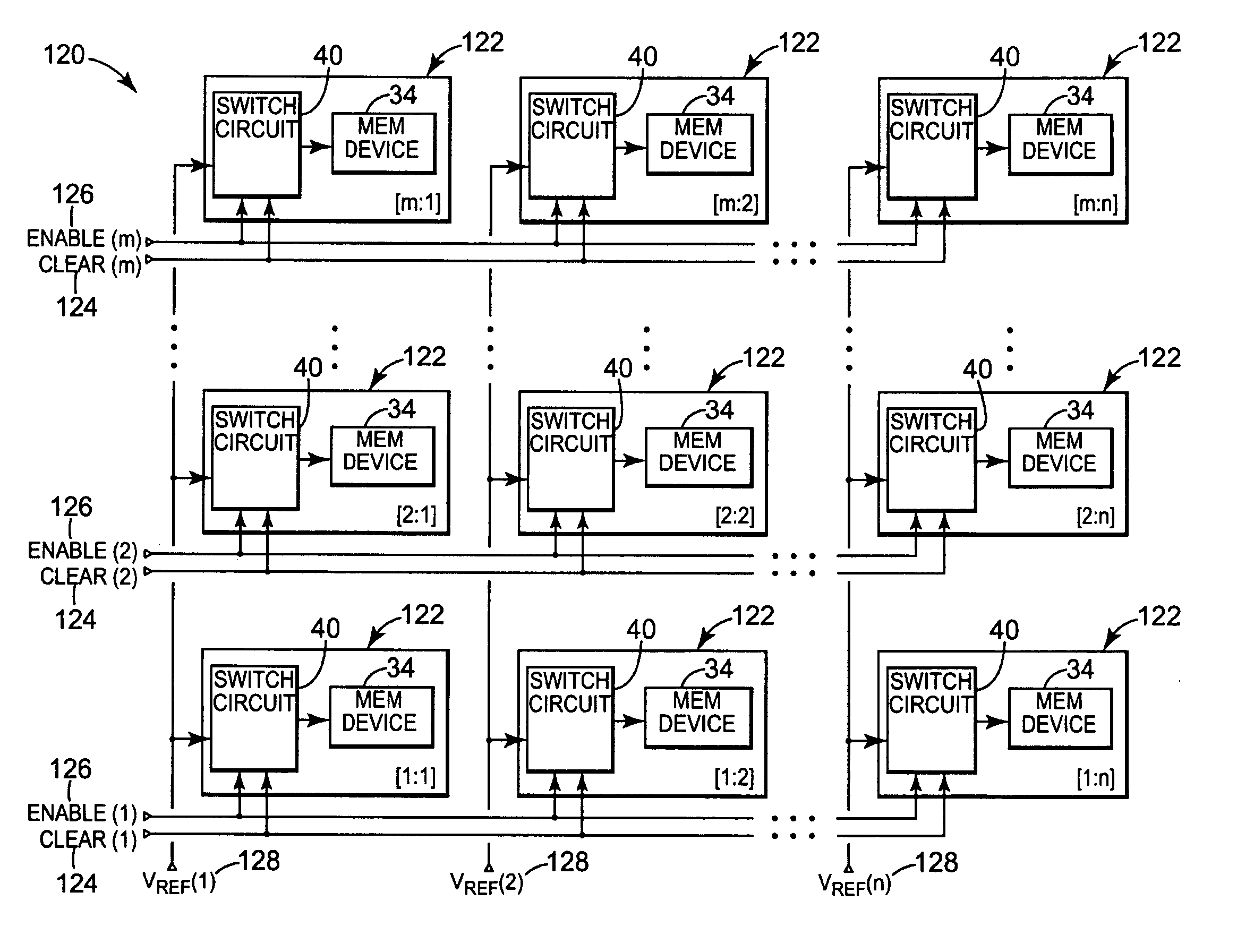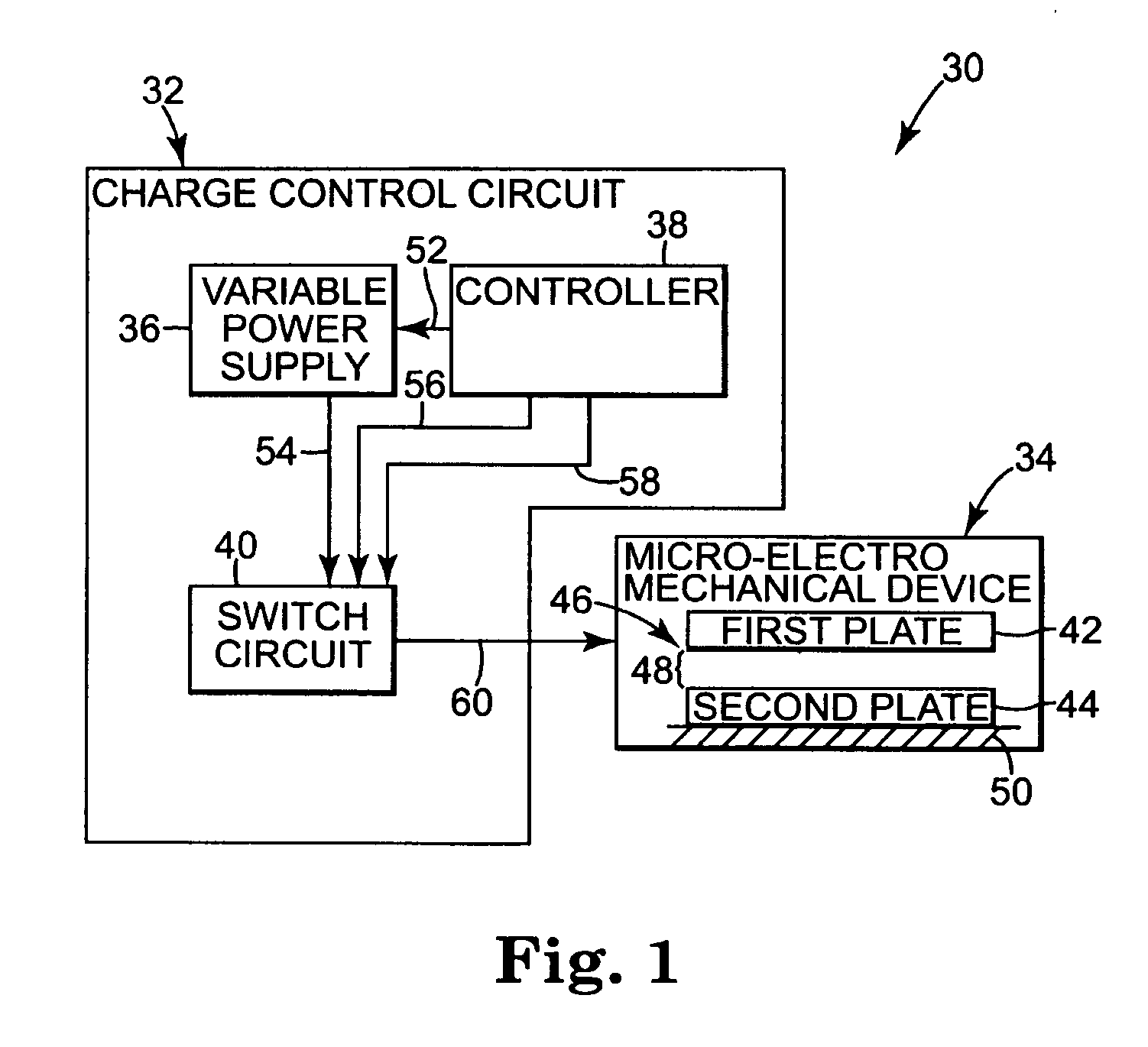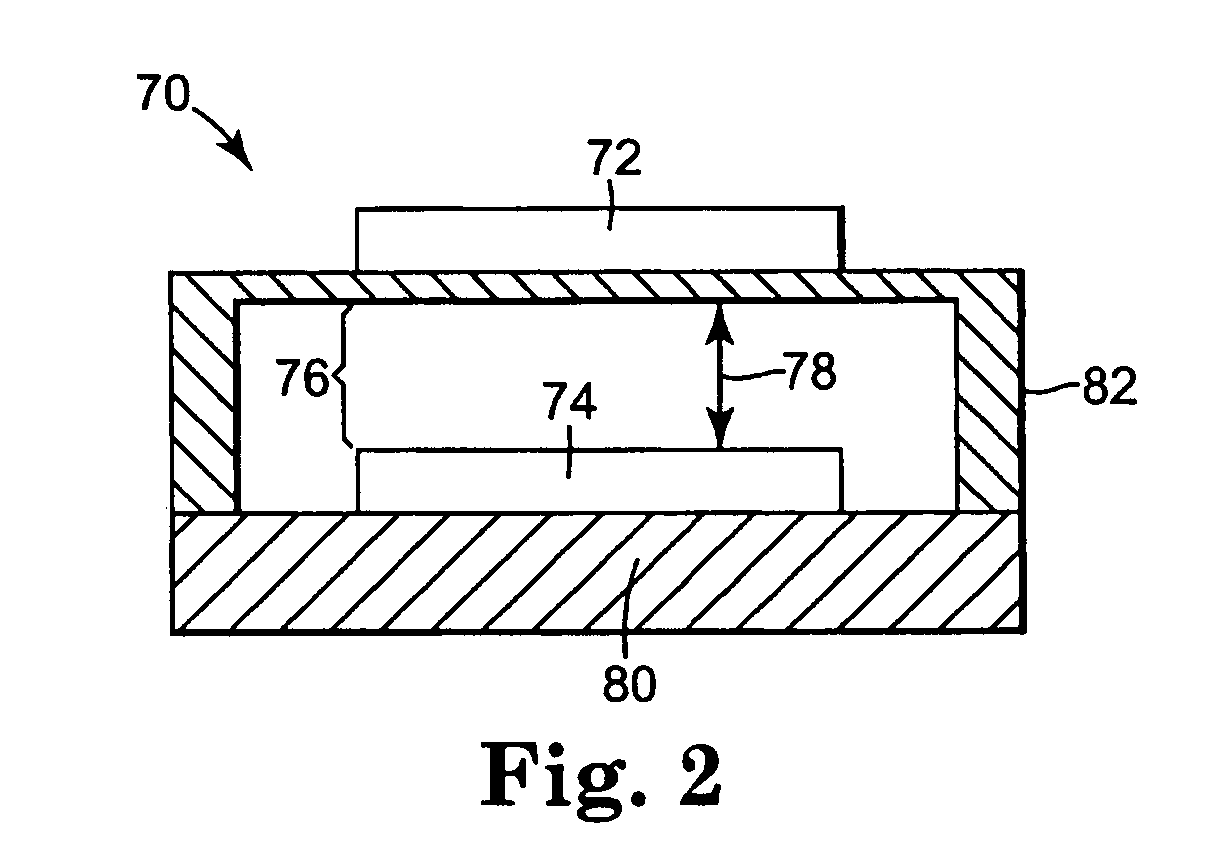Charge control of micro-electromechanical device
a micro-electromechanical and charge control technology, applied in static indicating devices, instruments, polarising elements, etc., can solve the problems of limiting the potential utility of the mems device and reducing the useable operating rang
- Summary
- Abstract
- Description
- Claims
- Application Information
AI Technical Summary
Benefits of technology
Problems solved by technology
Method used
Image
Examples
Embodiment Construction
In the following detailed description of the preferred embodiments, reference is made to the accompanying drawings which form a part hereof, and in which is shown by way of illustration specific embodiments in which the invention may be practiced. It is to be understood that other embodiments may be utilized and structural or logical changes may be made without departing from the scope of the present invention. The following detailed description, therefore, is not to be taken in a limiting sense, and the scope of the present invention is defined by the appended claims.
FIG. 1 is a diagram illustrating an exemplary embodiment of a micro-electromechanical system 30 according to the present invention. The micro-electromechanical system 30 includes a charge control circuit 32 and a micro-electromechanical device 34. Charge control circuit 32 further includes a variable power supply 36, a controller 38, and a switch circuit 40. In the exemplary embodiment, micro-electromechanical device...
PUM
 Login to View More
Login to View More Abstract
Description
Claims
Application Information
 Login to View More
Login to View More - R&D
- Intellectual Property
- Life Sciences
- Materials
- Tech Scout
- Unparalleled Data Quality
- Higher Quality Content
- 60% Fewer Hallucinations
Browse by: Latest US Patents, China's latest patents, Technical Efficacy Thesaurus, Application Domain, Technology Topic, Popular Technical Reports.
© 2025 PatSnap. All rights reserved.Legal|Privacy policy|Modern Slavery Act Transparency Statement|Sitemap|About US| Contact US: help@patsnap.com



